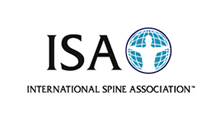
Spine Disorders
|
SIGNS AND SYMPTOMS Patients who have CSM characteristically complained of neck pain, limited neck mobility, and some difficulty walking. Early during the course of CSM development, sensory abnormalities are more prevalent in muscle findings. It is not uncommon for the patients with CSM to complain of upper extremity nerve root symptoms arising from the level of the spine where the central stenosis exists. There may be coexistent lateral recess or neuroforaminal stenosis, which causes nerve root symptoms. CSM symptom duration can range from one week to well over 20 years before presentation for care. Upper extremity nerve root sensory complaints range from vague discomfort and intermittent numbness and tingling to persistent pain. The extremity muscle stretch reflexes may be diminished in the distribution of the involved cervical spinal nerve. Approximately, 5-20% of individuals with significant neck (cervical) stenosis also have low back (lumbar) stenosis. When clinically significant stenosis exists both in the neck and lower back, the clinical presentation can be more challenging to figure out and to treat. When there is narrowing of the cervical spinal canal, neck movements may elicit a shock-like sensation, which radiates along the spine or into one or more of the extremities. This response is referred to as a Lhermitte’s sign. This can occur in any condition that positionaly compromises the spinal cord such as spinal stenosis, large disc herniation, spinal cord tumor, demyelinative disease, and spinal cord compression. One of the earliest signs/symptoms of CSM is lower extremity weakness. The smaller muscles tend to fatigue earlier than the larger muscles, but the patient is generally more aware when large muscle weakness occurs. The ability to walk progressively deteriorates as specialized nerve tract in the spinal cord become more compromised. Compromise of the spinal cord also results in impaired sensation and position sense. This contributes to difficulty walking. Diminished capacity to feel is often revealed during the physical examination with diminished vibratory perception, lower extremity incoordination, reduced toe position sense. The examination may also reveal a wide stance and wide-based gait all performed in an attempt to stabilize balance. There may be some degree of muscle spasticity. Neck and arm pain may be all that initially prompts an individual with this condition to seek medical treatment. Symptoms of CSM often develop slowly. The signs and symptoms of myelopathy are often discovered via a medical history and physical exam. Spinal cord compression can compromise nerve tracts, which run through the spinal cord. The signs and symptoms of cervical spondylotic myelopathy include:
Spondylotic myelopathy occurs following compression of the spinal cord from a narrowing of the central spinal canal due to a variety of degenerative changes collectively referred to as spondylosis. These degenerative disc changes are characterized by bone spurs (osteophytes), and thickening of the spinal ligaments. There is usually enlargement (hypertrophy) of the spine facet joints. Degenerative disc change may lead to a contributing disc bulge or herniation. Severe (high-grade) cervical stenosis can cause compression of the neural cell bodies and axons of the spinal cord as well as the blood supply to and within the spinal cord. RISK FACTORS Risk factors for cervical spondylotic myelopathy include
|
















